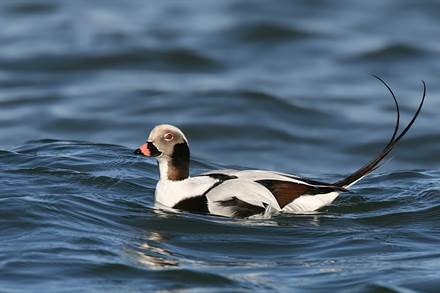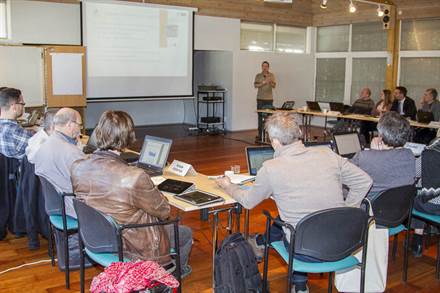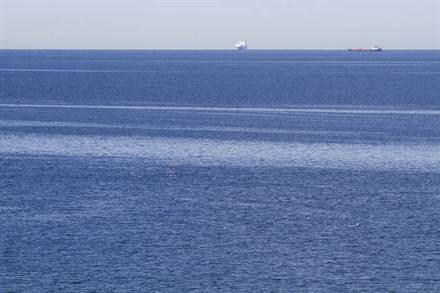
European experts develop plan for the recovery of Long-tailed Duck
-
Species
A group of experts met in Roosta, Estonia, between the 23rd and the 25th of April 2014 to develop an action plan for the recovery of the Long-tailed Duck (Clangula hyemalis).

The Long-tailed Duck is one of 11 declining waterbird species in the Baltic sea region, according to a 2011 report on Waterbird Populations and Pressures in the Baltic Sea. The species has been recognized as globally threatened by BirdLife International and IUCN in 2012.
The key threats to the Long-tailed Duck in its wintering range include oil pollution from shipping and entanglement in gillnets (leading to drowning). Expanding offshore windfarm developments also threaten to exclude the species from shallow banks, its key feeding areas.

A group of experts convened by Wetlands International, the Wildfowl and Wetlands Trust (WWT) and the Secretariat of the African-Eurasian Waterbird Agreement (AEWA) initiated the development of a new single-species action plan for the Long-tailed Duck, compiling a list of conservation measures closely linked to EU policies relating to the marine environment such as spatial planning, regulation of fisheries, transport and renewable energy development. The workshop received support from the German, UK and Estonian governments and from the European Commission.

A better understanding of the status of waterbirds at sea will require substantial improvements in offshore waterbird monitoring activities. To that end Wetlands International and WWT will organise another workshop with key stakeholders in the autumn, to address issues of coordination, data management and capacity building for such monitoring.
Read more about the workshop on the AEWA website.
Header image by Ron Knight. Used under a CC BY 2.0 license.
